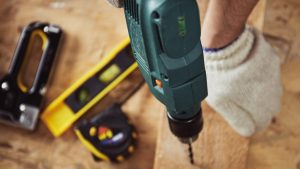Highway drivers have become accustomed to bold signs in work zones, advising them about lane reductions and travel delays.
The City of Toronto is testing a similar concept as part of its Smart Work Zone pilot program to determine if it can ease congestion in road construction zones, making them safer for both drivers and construction workers.
Downtown’s Jarvis Street is already facing lane reductions due to condominium construction. However, an additional construction project by the city to replace two 100-year-old watermains has reduced the well-travelled thoroughfare to one lane northbound and another southbound between Dundas Street East and Queen Street East.
Beginning in July, the city deployed two trailers equipped with variable message sign boards and Bluetooth travel time detectors.
The first is located on a traffic island at Adelaide Street facing northbound traffic. The second is located further north on Queen Street, but offers additional features.
“This is the Smart Work Zone trailer,” says Gregg Loane, the Transportation Services manager responsible for traffic systems delivery for the City of Toronto, who oversees the project.
“It contains a raiseable closed-circuit TV camera that communicates wirelessly back to our traffic signal control centre. We also have an additional travel time detector on Gerrard Street north of Queen.”
Using this array, the city monitors traffic images and construction zone travel times and posts messages about traffic incidents such as crashes, breakdowns and delays.
It will remove some of the frustration and anxiety around the delay
— Gregg Loane
Transportation Services
Northbound traffic first encounters the Adelaide street sign.
“In theory, the benefits we might expect include improving congestion by diverting some traffic away from the construction zone,” says Loane.
“If people choose to remain on Jarvis, they’ll at least have some idea of how long it will take. The theory is that even if you have no alternative, but you know why congestion is taking place and how long it will take to pass through it, it will remove some of the frustration and anxiety around the delay. In theory, that reduced frustration should mean less unpredictable or irrational movements and improved safety for motorists and for vulnerable construction workers within the work zone,” said Loane.
The Transportation Services division selected the watermain project for the pilot in partnership with the city’s Engineering and Construction Services (ECS).
“We see ECS as a client,” says Loane. “We want to see how this working relationship goes between ECS, its project managers and infield staff and our control room. If we can provide them with services that help them get their work done and ease traffic congestion around the work zone, that would be a success.”
He notes the technology isn’t often used in an urban environment. Most cities don’t have the benefit of a sophisticated traffic operations centre such as the one operated by the City of Toronto.
The Smart Work Zone trailers are also large, with a footprint of about nine-by-20-feet.
“If you only have a sidewalk between the curb and a building face there’s nowhere to put a trailer without blocking pedestrians, bicycles and the right of way,” says Loane. “We couldn’t find a southbound location for a trailer.”
The city already owned a unit containing a variable message sign board and Bluetooth travel time detector. It purchased a single customized Smart Work Zone trailer from Stinson Owl-Lite for about $50,000.
The pilot project will last until the watermain work is completed, likely mid-fall. A public survey on the innovation will be advertised via the sign. ECS and other city stakeholders will also be surveyed.
“We’re fairly optimistic that it will be well received by the public,” says Loane. “I think people appreciate it when we provide them with actionable information that makes the road construction experience a little less painful for everyone.”











Recent Comments